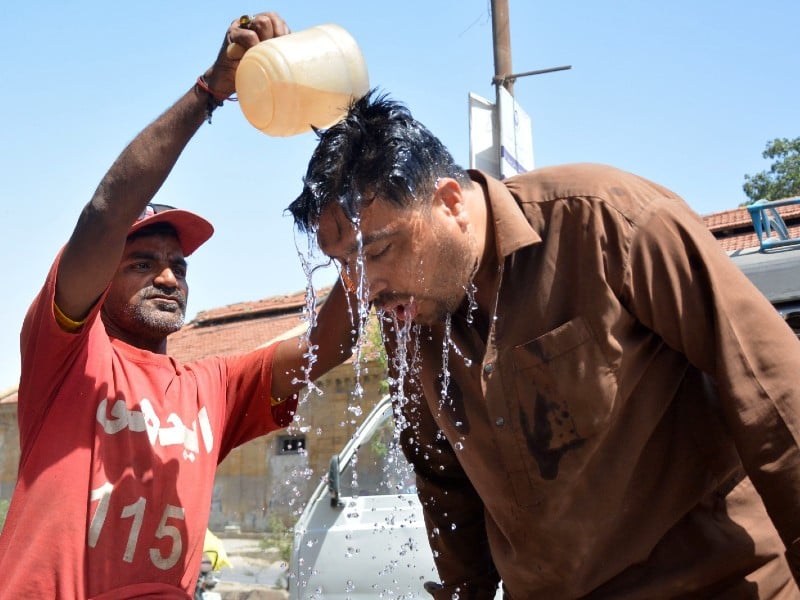As temperatures soar, reaching a daunting 45-degree mark in various parts of Punjab, the impending heatwaves forecasted to sweep the province over the next four weeks will undoubtedly challenge human and animal endurance, as well as the planning capabilities of provincial authorities.
The Meteorological Office anticipates a further increase in temperatures by a scorching six to eight degrees Celsius in the coming days. Although this trend may not surpass previous records, it certainly approaches them closely, remarks Shahid Abbas, the chief meteorologist stationed in Lahore.
The warning is deemed significant given its projected duration: the heatwaves are expected to persist until mid-June, with recurring spikes anticipated. Several cities like Faisalabad and Sahiwal already experienced temperatures reaching 45 degrees Celsius on Friday, and as the heat intensifies in the coming days, life in these regions will become exceedingly challenging.
While brief hot spells are routine for residents in the plains, prolonged ones could pose significant challenges. The Meteorological Office has already alerted relevant departments, urging them to take necessary measures to mitigate the impact of the impending hot spells.
Irfan Ali Kathia, the Director-General of the Provincial Disaster Management Authority (PDMA), outlines mitigation measures being implemented. He mentions that areas like Bahawalpur, Bahawalnagar, Rahim Yar Khan, and Cholistan are expected to be the most affected. In these regions, medical camps, water points, and shaded areas are being ensured.
Furthermore, water bowsers will be dispatched regularly to remote desert areas to ensure water availability for both humans and animals. The PDMA is also working on providing locally-made umbrellas, similar to those distributed in Bangladesh, to protect laborers working under the sun.
However, reports from correspondents in these districts suggest no such activities have been observed yet.
Despite the mid-June warning issued by the Meteorological Office, the PDMA anticipates the heatwave may persist until July before the onset of the monsoon season.
Farmers are also apprehensive, particularly about early-sown cotton, which is currently in the flowering stage and may suffer from excessive shedding and the risk of burning. Maize and rice crops will require additional water in this heat.
Despite the challenges posed by the heat, there is a potential silver lining: weakened pests may not pose significant threats to crops like cotton.
The sudden temperature rise is also accelerating glacier melting in the country’s north, leading to increased water flow in rivers. National reservoirs currently hold substantially more water than last year, ensuring adequate water supply to provinces, as confirmed by the Indus River System Authority (IRSA).
In Bahawalpur, where temperatures are soaring, streets are deserted, markets remain closed, and attendance at Friday prayers is thin due to heatstroke fears, especially among the elderly and children. However, as evening approaches, more customers venture out, benefiting vendors selling watermelon and sherbet.
In Rahim Yar Khan, concerns arise regarding cotton sowing and mango orchard health. Agriculture officials advise vigilant irrigation to protect crops from the high temperatures.
Meanwhile, many inhabitants of Cholistan, including shepherds and nomadic tribes, have relocated their herds to canal-side villages in search of water, where they are expected to stay until the rainy season begins in July.




